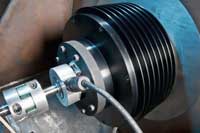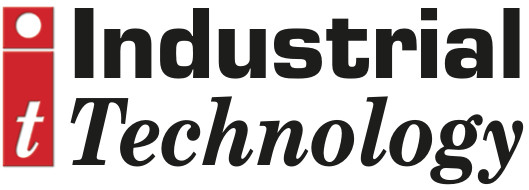
Posted to News on 2nd Aug 2013, 00:00
Magnetic gear at the heart of innovative CVT design
Applications as diverse as hybrid vehicles and wind turbines, as well as industrial gear applications, could all benefit from the latest developments in magnetic gear technology

>Magnomatics has been working hard on its magnetic gear since we last reported on it in Industrial Technology and there have been a number of new innovations that extend the applications potential of this innovative technology. The range has been extended to include fixed-ratio magnetic gears, magnetically-geared motor generators (PDD) and most recently a magnetic continuously variable transmission (MAGSPLIT).
>In operation, as with any gear technology, one shaft rotates at a different speed to the other. However, instead of using meshing teeth to connect the shafts and transmit mechanical power, this gear uses the magnetic field of powerful rare earth magnets. It has no contacting parts, and so does not require lubrication. This means that the gear offers inherently high reliability, with little or no requirement for maintenance. The gear is also more efficient because there is no friction.
>A magnetic gear is directly analogous to a planetary, or epicyclic, gear and consists of three rings. The outer and inner rings have powerful magnets, arranged in an alternating north-south pattern, whilst the middle ring consists of steel segments which alter the magnetic field between the inner and outer magnet rings.
>The inner ring consists of a low number of magnets and is connected to the high speed shaft. The middle ring consists of a number of steel segments held within a mechanical structure and is typically connected to the low speed shaft. The outer ring, consisting of a high number of magnets, is usually held stationary in conventional gear applications. There is no physical contact between any of the rings as the motion is transferred across an air gap using the force of the magnetic field.
>The steel pole segments act as flux paths from each of the rings of magnets. This has the effect of creating harmonics in the fields produced by each ring of magnets. By careful selection of pole numbers the magnet arrays can couple via the harmonic fields creating a gear ratio. The behaviour of this gear is exactly the same as a mechanical epicyclic gearbox, and can provide a high performance replacement for conventional epicyclic gears in demanding applications.
>In high-torque applications, torque densities comparable with mechanical gears can be achieved with an efficiency of greater than 99% at full load and with much higher part load efficiencies than a mechanical gear. Magnetic gears inherently protect against overloads by harmlessly slipping if an overload torque is applied, and automatically and safely re-engaging when the fault torque is removed.
>An evolution of the fixed-ratio magnetic gear was realised by introducing a stator with electrical windings around the gear. This creates a very compact motor or generator that is exceptionally powerful at low speed operation compared to other technologies. This is Magnomatics' pseudo direct drive (PDD) and is said to be ideal where a high speed motor would traditionally be used with a mechanical gearbox.
>This new type of electrical machine is able to drive a large load without the use of a mechanical gearbox. It offers a significant size reduction over conventional direct drive machines, whilst the ultra high efficiency reduces the need for ancillary cooling. Power factor is typically greater than 0.9, and the PDD provides the same inherent torque overload protection and reduced maintenance requirements as the magnetic gear. Importantly, the PDD is controlled using standard power electronics.
>Most recently Magnomatics has extended the magnetic gear concept to create a variable magnetic gear which can be used as a power-split device within a hybrid vehicle.
>In a MAGSPLIT unit a wound stator is introduced, the outer ring of magnets has a low number of pole pairs and so becomes the high speed rotor, something that is not possible with an epicyclic gear. This outer high speed rotor is now free to rotate. By controlling the rotational speed of this outer ring of magnets one can control the gear ratio of the inner magnetic gear. The ratio can be continuously adjusted and even set such that the output shaft is stationary or reverses. This is not a passive device since power flow is always required through the stator, either as a source or sink. Typically the maximum power required in the control stator is 25% of the power being transferred through the powertrain.
>Applications for MAGSPLIT include hybrid vehicle powertrains for cars, buses, trucks and off-highway vehicles. There are already many vehicles with power-split drivetrains, e.g. the Toyota Prius, but these are achieved using mechanical epicyclic gears in conjunction with a motor generator. In recent simulations Magnomatics has predicted that the MAGSPLIT will provide somewhere between a 3% and 5% improvement in fuel economy over a mechanical power split device.
>In July this year, Magnomatics received a £100,000 Smart Award to develop a second generation of the MAGSPLIT technology. The solution is attracting a lot of interest from vehicle manufacturers and Magnomatics is currently working with a leading global car manufacturer on a project funded by the Technology Strategy Board (TSB) to evaluate the application of the technology in hybrid cars.
>In a separate project, also funded by the TSB, Magnomatics is working with a large, internationally renowned truck and bus manufacturer to evaluate the application of MAGSPLIT for larger commercial vehicles.









